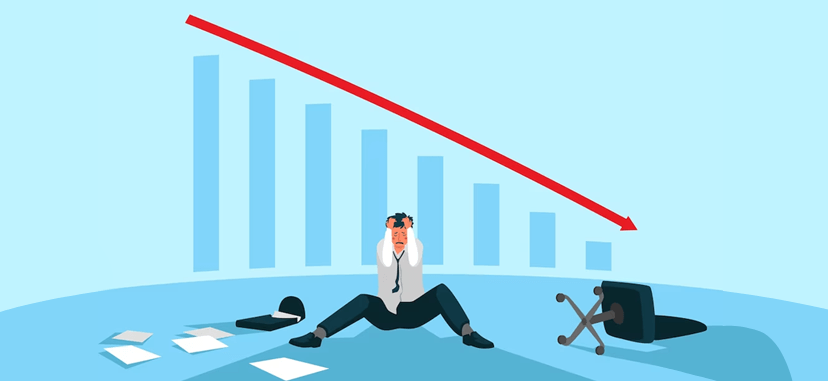
Click the button to start reading
Unraveling the Macro Environment: Your Key to Marketing Success
Ever wondered why some businesses seem to effortlessly succeed while others constantly struggle? It’s time to unravel the mystery of the macro environment in marketing. Think of it as a detective story, but instead of solving crimes, we’re deciphering marketing puzzles. Intrigued? Let’s dive in.
What’s This Macro Environment Thing All About?
You’re probably asking, “What exactly is this macro environment in marketing?” Well, imagine you’re a ship’s captain. The macro environment is like the sea around you – it’s all the external factors that you can’t control, but must navigate. Things like the economy, social trends, even the weather. It’s crucial because it can make the difference between smooth sailing and getting caught in a storm.

The Big Six: Unpacking the Components of the Macro Environment
Let’s delve into the six components of the macro environment in marketing. These are the major players you need to know. Picture them as the compass, the map, the wind, the currents, the rocks, and the stars in our ship analogy.
1. Political Factors
First up, political factors. You might not be a politician, but here’s why they matter in marketing. Political stability, government policies, and trade regulations – all set the rules of the game. Ever tried playing a game without knowing the rules? Not fun, right?
2. Economic Factors
Next, we have economic factors. Ever heard of GDP or inflation? They’re like the wind and the currents in our ship analogy. They can propel your business forward, or they can make you work twice as hard just to stay in the same place. So, understanding them is crucial to setting your marketing strategy.
3. Social Factors
Now, let’s discuss social factors. Yes, society’s norms and values can impact your marketing. Surprised? Think about it. Would you market a luxury product the same way in a society that values frugality as in one that values conspicuous consumption? Probably not.
4. Technological Factors
Technological factors, are ever-changing and ever-important. They’re like the stars in our ship analogy. They can guide you, or they can lead you astray if you’re not careful. In marketing, staying on top of technological trends can give you a competitive edge.
5. Legal Factors
Legal factors, not the most exciting, but oh so important. They’re like the rocks in our ship analogy. You don’t want to crash into them. In marketing, staying compliant with laws and regulations is non-negotiable.
6. Environmental Factors
Lastly, environmental factors. Going green isn’t just a trend, it’s a necessity. In our ship analogy, it’s like taking care of the sea you’re sailing on. In marketing, it’s about being sustainable and socially responsible.

Macro Environment in Action
Enough with the theory, let’s dive into some real-world examples of the macro environment in marketing. Because who doesn’t love a good story, right?
- Example 1: The Rise of Sustainable Fashion
Take the fashion industry, for instance. With growing environmental awareness, brands like Patagonia and Everlane have embraced sustainable practices, responding to the environmental factors in their macro environment. They’ve not only won the hearts of eco-conscious consumers but also set a new standard in the industry. - Example 2: Tech Giants and Privacy Laws
Or consider how tech giants like Facebook and Google have had to navigate the legal factors in their macro environment. With stricter privacy laws coming into play worldwide, they’ve had to adapt their data practices and transparency policies. - Example 3: The Impact of COVID-19 on Remote Work Tools
Consider the sudden shift to remote work due to the COVID-19 pandemic. This social and economic change in the macro environment led to a surge in demand for remote work tools. Companies like Zoom and Slack saw a significant increase in their user base, adapting their marketing strategies to cater to this new norm. - Example 4: The Rise of Plant-Based Meat Alternatives
Another example is the rise of plant-based meat alternatives. With growing awareness about the environmental impact of meat consumption, companies like Beyond Meat and Impossible Foods have capitalized on this trend. They’ve positioned their products as sustainable and cruelty-free alternatives to traditional meat, responding to the environmental and social factors in their macro environment.

The Macro Environment’s Impact on Different Industries
Every industry has its unique challenges and opportunities when it comes to the macro environment. Let’s explore a few examples.
The Tech Industry
In the fast-paced world of tech, the macro environment is like a roller coaster ride. Technological factors are the obvious ones, with constant innovation and disruption. But don’t forget about legal factors, like privacy laws and patent regulations. Or social factors, like the digital divide and online etiquette.
The Retail Industry
Retail, a sector that’s always in the public eye, has its own macro environment challenges. Economic factors like consumer spending and inflation rates can make or break a retail business. Social factors, like changing consumer tastes and shopping habits, also play a big role.
The Healthcare Industry
Healthcare, a vital industry with unique challenges. Technological factors like advancements in medical technology can revolutionize healthcare delivery. But they also have to navigate legal factors like healthcare regulations and patient privacy laws.
The Food Industry
In the food industry, environmental factors like sustainable farming practices and food waste reduction are becoming increasingly important. Social factors, like changing dietary habits and the demand for organic or plant-based options, are also shaping the industry.
The Automotive Industry
For the automotive industry, technological factors like the rise of electric vehicles and autonomous driving technology are game-changers. But they also have to consider environmental factors like emission regulations and the push for sustainable practices.
The Tourism Industry
In the tourism industry, the macro environment plays a significant role. Political factors like visa regulations and travel advisories can greatly influence tourist inflow. Environmental factors like climate change and natural disasters also have a profound impact. For instance, ski resorts have to adapt to shorter winter seasons due to global warming.
The Education Industry
The education industry is another sector heavily influenced by the macro environment. Technological factors like the rise of online learning platforms have revolutionized the way education is delivered. Social factors, such as changing attitudes towards traditional degrees and the growing emphasis on lifelong learning, are also shaping the industry.

How to Analyze the Macro Environment for Your Business
So, you’re ready to analyze the macro environment for your own business? Fantastic! Here’s a step-by-step guide to help you navigate this process.
Step 1: Gather Data
First things first, you need data. But where do you find it? Well, you’re in luck because data is everywhere these days. The goal is to gather as much relevant data as you can about the external factors affecting your business.
Here’s how to gather it:
- Government reports and industry analyses: These are great sources for information on political, economic, and legal factors. For example, the Bureau of Labor Statistics provides a wealth of data on employment, inflation, and consumer spending.
- Market research and trend reports: These can provide insights into social and environmental factors. Nielsen, for instance, offers reports on consumer behavior and emerging trends.
- Tech blogs, patent databases, and scientific journals: These are your go-to sources for information on technological factors. Websites like TechCrunch or databases like Google Patents can provide insights into the latest tech trends and innovations.
Step 2: Analyze the Data
Now that you have the data, what do you do with it? It’s time to put on your detective hat and start analyzing. Look for trends, patterns, and changes in the data.
Here’s how to analyze it:
- Identify key factors: What are the key political, economic, social, technological, legal, and environmental factors affecting your industry? For example, if you’re in the tech industry, you might look at factors like data privacy regulations, technological advancements, and societal attitudes towards tech.
- Look for changes: How have these factors changed over time? For instance, the rise of social media has significantly changed the way businesses market their products.
- Identify opportunities and threats: What are the potential opportunities and threats presented by these factors? For example, a growing trend towards sustainability could be an opportunity for a business selling eco-friendly products, but a threat for one relying on non-renewable resources.
Step 3: Make Strategic Decisions’
Data and analysis are great, but they’re not much use if you don’t act on them. So, how do you make strategic decisions based on your macro environment analysis?
Here’s how to make strategic decisions:
- Identify opportunities and threats: Start by identifying the opportunities and threats in your macro environment. For example, if there’s a growing demand for vegan products in your market, that’s an opportunity. If new regulations are likely to increase your production costs, that’s a threat.
- Consider your business’s strengths and weaknesses: How can you leverage your strengths and mitigate your weaknesses to take advantage of the opportunities and neutralize the threats? For instance, if you have a strong brand reputation for quality, you could leverage this to introduce a new premium product line.
- Make strategic decisions: Whether it’s entering a new market, launching a new product, or repositioning your brand, your macro environment analysis should guide your decisions. For example, if your analysis reveals a growing trend towards remote work, you might decide to develop products or services catering to remote workers.
Step 4: Monitor and Update
Finally, remember that analyzing the macro environment isn’t a one-time task. The macro environment is constantly changing, and so should your analysis.
Here’s how to monitor and update:
- Stay updated: Keep an eye on industry news and trends to stay updated on changes in the macro environment. For example, you could set up Google Alerts for keywords related to your industry.
- Regularly review your analysis: Make it a habit to review and update your macro environment analysis regularly.

The Risks of Ignoring the Macro Environment
By now, you understand the importance of the macro environment in marketing. But what happens if you choose to ignore it? Well, it’s not a pretty picture. Ignoring the macro environment can lead to missed opportunities, unexpected threats, and even business failure.
Here’s why:
- Missed Opportunities: By not keeping an eye on the macro environment, you might miss out on key trends and changes that could benefit your business. For example, a growing interest in sustainable products could be a great opportunity for a business selling eco-friendly items.
- Unexpected Threats: Changes in the macro environment can also bring threats. If you’re not aware of these changes, they can catch you off guard. For example, new regulations or shifts in consumer behavior can significantly impact your business.
- Business Failure: In the worst-case scenario, ignoring the macro environment can lead to business failure. If your business isn’t prepared for major changes in the macro environment, it might not survive.
So, it’s clear that analyzing the macro environment isn’t just a nice-to-have—it’s a must-have for any business that wants to succeed in today’s dynamic market.
Conclusion: Embrace the Macro Environment
Remember, the macro environment is like the weather. It’s constantly changing, and it affects everyone—whether you’re prepared for it or not. But unlike the weather, you can’t just check an app on your phone to see what the macro environment will be like tomorrow. It requires careful data gathering, thorough analysis, strategic decision-making, and constant monitoring.
So, don’t be a business that gets caught in the rain without an umbrella. Embrace the macro environment. Understand it. Analyze it. Adapt to it. Because when you do, you’ll not only weather the storm, but you’ll also find new opportunities to thrive.
Thanks for joining us on this journey through the macro environment in marketing. We hope you’ve found it enlightening and, dare we say, a little bit fun. So, go forth, analyze, and conquer your macro environment. We’re rooting for you!
















